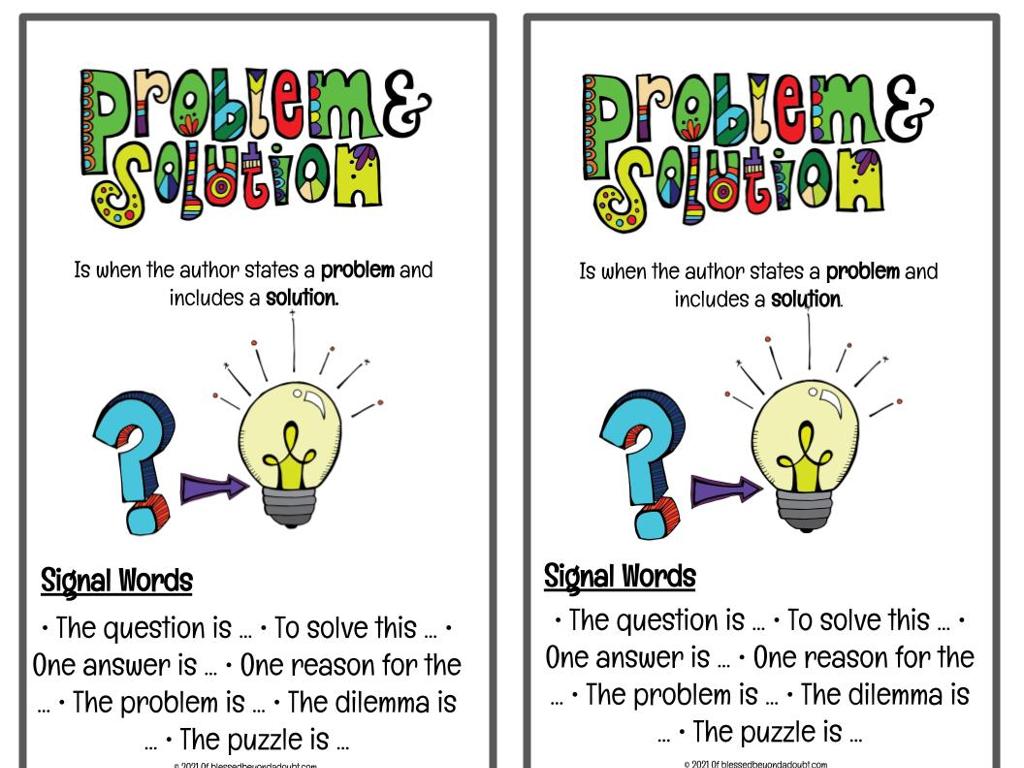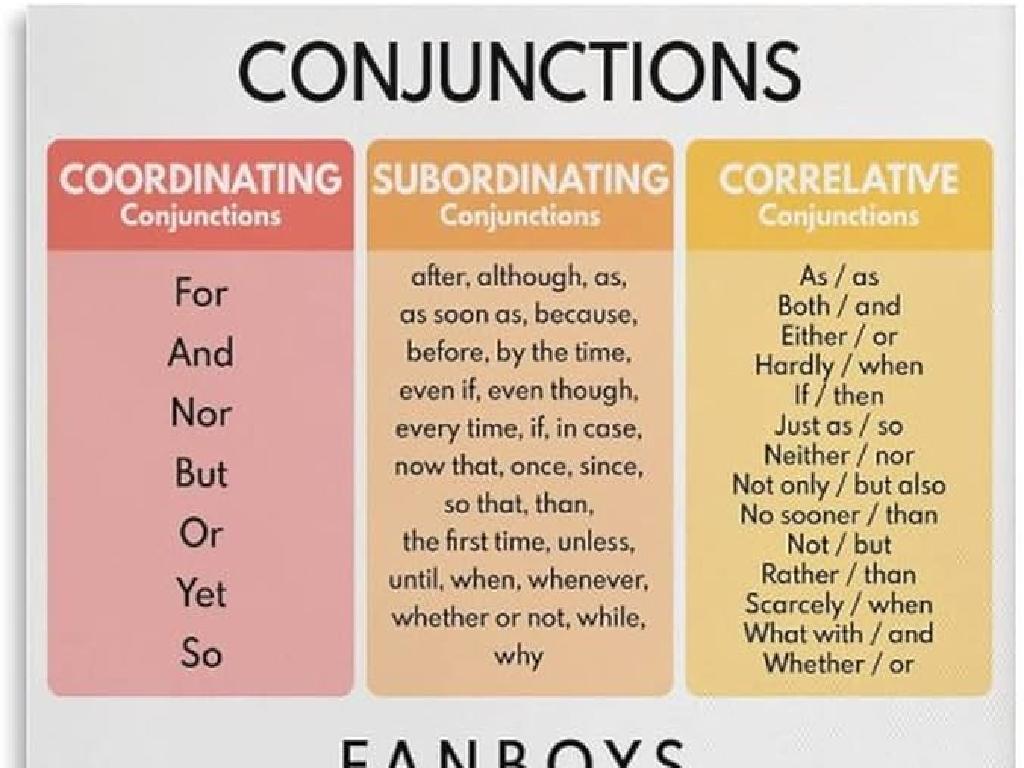Multiply And Divide Powers: Integer Bases
Subject: Math
Grade: Eighth grade
Topic: Exponents
Please LOG IN to download the presentation. Access is available to registered users only.
View More Content
Multiplying & Dividing Powers with Integer Bases
– Exponents represent repeated multiplication
– Review: Base, exponent, and power terms
– Multiplying powers with the same base
– Multiply the exponents when bases are the same: a^m * a^n = a^(m+n)
– Dividing powers with the same base
– Divide the exponents when bases are the same: a^m / a^n = a^(m-n)
|
Begin with a brief explanation of exponents as a way to express repeated multiplication of a number by itself. Recap the basic terminology of exponents, including the base and the power, and how to read them. Then, focus on the rules for multiplying powers with the same base by adding their exponents, and dividing powers with the same base by subtracting the exponents. Provide examples for each case, such as 2^3 * 2^2 = 2^(3+2) for multiplication, and 5^4 / 5^2 = 5^(4-2) for division. Encourage students to practice these operations with different integer bases to solidify their understanding.
Understanding the Concept of Power
– Definition of a power
– A power represents repeated multiplication of a number
– Power components: base and exponent
– Base: number being multiplied; Exponent: how many times
– Example: 2^3 (2 is base, 3 is exponent)
– 2^3 means 2 multiplied by itself 3 times (2*2*2)
– Multiplying & dividing powers with same base
– When bases are same, multiply/divide exponents
|
Introduce the concept of power as a form of expressing repeated multiplication. Clarify the roles of the base and exponent in this expression. Use 2^3 as an example to show that 2 is the number being multiplied (base) and it is multiplied by itself 3 times (exponent). Extend the discussion to multiplying and dividing powers with the same base, emphasizing that the exponents are added when multiplying and subtracted when dividing. Provide additional examples to ensure comprehension and prepare students for applying these concepts in practice.
Multiplying Powers with the Same Base
– Rule: Keep the base, add exponents
– Example: 3^2 x 3^4 = 3^(2+4)
– When bases are the same, just add the exponents
– Practice: Multiply 5^3 x 5^2
– Apply the rule: 5^3 x 5^2 = 5^(3+2) = 5^5
|
This slide introduces the rule for multiplying powers with the same base, which is a fundamental concept in working with exponents. The rule is straightforward: when multiplying, keep the base the same and simply add the exponents. The example provided uses base 3 to demonstrate the rule. For the practice problem, students will apply this rule to multiply 5^3 by 5^2. Encourage students to work through the problem and verify their understanding of the rule. This exercise will help solidify their grasp of exponent rules and prepare them for more complex problems involving powers.
Dividing Powers with the Same Base
– Rule: Keep base, subtract exponents
– Example: 7^5 ÷ 7^2 = 7^(5-2) = 7^3
– When dividing like bases, subtract the lower exponent from the higher
– Practice: Divide 10^4 ÷ 10^2
– Apply the rule: 10^4 ÷ 10^2 becomes 10^(4-2)
– Simplify to 10^(4-2) = 10^2
– The answer is 10^2 or 100
|
This slide introduces the rule for dividing powers with the same base, which is a fundamental concept in working with exponents. The rule is simple: when dividing, keep the base the same and subtract the exponents. Provide the example with base 7 to illustrate the rule. Then, present a practice problem using base 10, which is familiar to students, to reinforce the concept. Encourage students to solve the practice problem on their own, then show the simplification process step by step. Remind them that understanding this rule will make working with exponents much easier in algebra.
Zero Exponent Rule
– Non-zero base to zero power
– Always equals one
– Example: 4^0 = 1
– Any number, like 4, raised to the power of 0 is 1
– Practice: Calculate 15^0
– Apply the zero exponent rule to find 15^0
|
The Zero Exponent Rule is a fundamental concept in understanding exponents. It states that any non-zero base raised to the power of zero is always equal to one. This rule is universal and applies to all non-zero numbers. For example, 4 raised to the power of 0 is 1. To reinforce this concept, students are given a practice problem: What is 15^0? The expected answer is 1, according to the Zero Exponent Rule. This slide aims to solidify the students’ understanding of the rule through a clear example and a practice problem. Encourage students to think about why this rule makes sense and how it simplifies calculations with exponents.
Understanding Negative Exponents
– Negative exponents signify reciprocals
– A negative exponent inverts the base number
– Example: 2^-3 equals 1/8
– 2^-3 means 1 divided by 2^3
– Simplify expressions with negative exponents
– Turn the negative exponent positive by finding the reciprocal
– Practice: Simplify 6^-2
– What is 1 over 6 squared?
|
This slide introduces the concept of negative exponents, which is a way to represent reciprocals of numbers raised to positive exponents. It’s crucial for students to understand that a negative exponent does not make the number negative but instead flips the base to its reciprocal. Provide the example of 2^-3 to illustrate this concept clearly. Then, guide students through the process of simplifying expressions with negative exponents, emphasizing the need to ‘flip’ the base and make the exponent positive. The practice problem 6^-2 will help reinforce this concept, and students should be encouraged to solve it by recognizing that it represents 1/(6^2) or 1/36. During the class, work through additional examples and encourage students to ask questions if they’re unsure.
Class Activity: Exponent Relay
– Split into groups for problem-solving
– Solve assigned exponent problems
– Present solutions and explain steps
– Understand multiplying/dividing powers
– Reinforces concepts with integer bases
|
This interactive class activity is designed to reinforce the students’ understanding of multiplying and dividing powers with integer bases. Divide the class into small groups and assign each group a set of exponent problems. After solving the problems, each group will present their solutions to the class and explain the steps they took to arrive at their answers. This peer-teaching approach not only solidifies the students’ grasp of the material but also enhances their communication and collaborative skills. Possible activities could include: creating a relay race where each student solves a part of the problem, a competition to see which group can solve the most problems correctly, or a ‘gallery walk’ where students circulate and review each other’s work.
Class Activity: Exponent Relay
– Split into groups for problem-solving
– Solve assigned exponent problems
– Present solutions and explain steps
– Understand multiplying/dividing powers
– Reinforces concepts with integer bases
|
This interactive class activity is designed to reinforce the students’ understanding of multiplying and dividing powers with integer bases. Divide the class into small groups and assign each group a set of exponent problems. After solving the problems, each group will present their solutions to the class and explain the steps they took to arrive at their answers. This peer-teaching approach not only solidifies the students’ grasp of the material but also enhances their communication and collaborative skills. Possible activities could include: creating a relay race where each student solves a part of the problem, a competition to see which group can solve the most problems correctly, or a ‘gallery walk’ where students circulate and review each other’s work.




/mla_works_cited_example.png)
